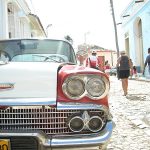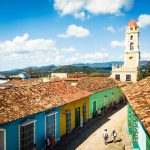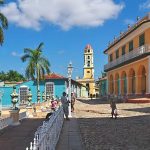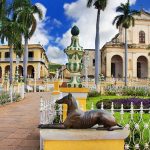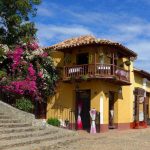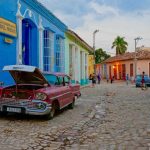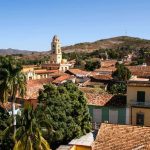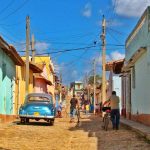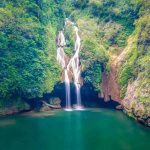Trinidad
You are here for our cycling tours in Cuba, but lets dig deeper
Trinidad boasts four of the six principal tourist destinations in the province of Sancti Spíritus, in the center of the island. It is not only one of the best preserved colonial cities in the Caribbean, but also offers the beach at Ancón, one of the most popular on the southern coast of Cuba, as well as natural sites like Topes de Collantes and the Valle de los Ingenios, declared a World Heritage Site in 1988 by the United Nations Organization for Education, Science, and Culture (UNESCO), along with the city. Its privileged location has made the area the perfect destination for circuit tourism, a modality in which Cuba is expanding, thanks to the variety of heritage cities throughout the country that can be visited.
Places to keep in mind
You are here to ride your bicycle, and though there is plenty of that, here are some interesting spots. Many you will visit with us but maybe some are worth you taking your time while you are here.
- Valle de los Ingenios
- Iznaga Tower
- Parque el Cubano
- Salto del Caburní
- Plaza Mayor
- Playa Ancon
- Ruinas de Ingenio San Isidro de los Destiladeros
- San Francisco de Asis Convent
Brief History
In 1514 pioneering conquistador Diego Velázquez de Cuéllar founded La Villa de la Santísima Trinidad on Cuba’s south coast, the island’s third settlement after Baracoa and Bayamo. In 1518, Velázquez’ former secretary, Hernán Cortés, passed through the town recruiting mercenaries for his all-conquering expedition to Mexico, and the settlement was all but emptied of its original inhabitants. Over the ensuing 60 years it was left to a smattering of the local Taíno people to keep the ailing economy alive through a mixture of farming, cattle-rearing and a little outside trade.
Reduced to a small rural backwater by the 17th century and cut off from the colonial authorities in Havana by dire communications, Trinidad became a haven for pirates and smugglers who conducted a lucrative illegal slave trade with British-controlled Jamaica.
Things began to change in the early 19th century when the town became the capital of the Departamento Central, and hundreds of French refugees fleeing a slave rebellion in Haiti arrived, setting up more than 50 small sugar mills in the nearby Valle de los Ingenios. Sugar soon replaced leather and salted beef as the region’s most important product; by the mid-19th century the area around Trinidad was producing a third of Cuba’s sugar.
The boom ended rather abruptly during the Independence Wars, when the surrounding sugar plantations were devastated by fire and fighting. The industry never fully recovered. By the late 19th century the focus of the sugar trade had shifted to Cienfuegos and Matanzas Provinces, and Trinidad slipped into an economic coma.
The tourist renaissance began in the 1950s, when President Batista passed a preservation law that recognized the town’s historical value. In 1965 the town was declared a national monument, and in 1988 it became a Unesco World Heritage Site.

